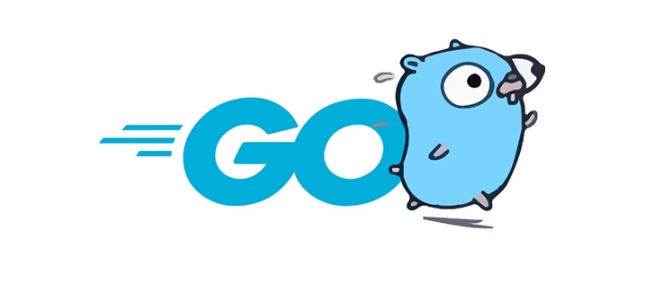In Go language, interface{} and any are exactly the same type. Starting from Go 1.18, any was introduced as an alias for interface{}. The main purpose is to improve the readability and semantic clarity of the code; 1. any is more suitable for scenarios that express "arbitrary types", such as function parameters, map/slice element types, general logic implementations, etc.; 2. interface{} is more suitable for defining interface behavior, emphasizing interface types, or compatible with old code; 3. The performance and underlying mechanisms of the two are exactly the same. The compiler will replace any with interface{}, which will not cause additional overhead; 4. Pay attention to type safety issues when using it, and may need to be used with type assertions or reflection processing; 5. New projects recommend using any to improve semantic clarity, but retain interface{} when defining interfaces or compatible with old code; 6. Generics should be given priority in generic programming for better type safety.

In Go, interface{} and any look like two different types, but they are actually exactly the same. Since Go 1.18, any was introduced as an alias for interface{} , mainly to improve the readability and semantic clarity of the code.

When to use any and when to use interface{} ?
Simply put: any is an alias for interface{} , and the two can be used interchangeably . However, in actual encoding, you can choose a more appropriate writing method according to the context:
- If you want to express "this variable can accept any type of value", then using
anyis more intuitive. - If you are defining an interface method or implementing interface behavior, it may be more customary to continue using
interface{}.
For example:

var v1 interface{} // Accept any type of value var v2 any // Same as above, but with clearer semantics Although all achieve the same effect, it is recommended to use any in new projects as its intention is clearer.
Use scenario comparison
? Suitable for any
- Function parameters or return values ??need to receive/return any type
- Defines the element of map or slice to any type
- Implement general logic (such as serialization, logging, etc.)
For example:

func LogValue(v any) {
fmt.Printf("Type: %T, Value: %v\n", v, v)
}This function can handle various types of inputs and is very flexible.
? Suitable for using interface{}
- When defining an empty interface type, for example, it is used to implement duck typing (duck type)
- When it is necessary to express "this is an interface" explicitly
- Compatible with older versions of Go code
for example:
type Animal interface{}Although modern writing can be written directly:
type Animal any
But semantically, interface{} emphasizes that it is an interface type.
Is the performance the same as the underlying mechanism?
Yes, the runtime performance of both is exactly the same . The Go compiler will replace any with interface{} without any additional overhead. So you can use any to improve code readability without worrying about performance issues.
However, it should be noted that using any or interface{} will bring some type safety sacrifices. for example:
var a any = 5 var b string = a.(string) // runtime panic!
This situation needs to be handled in conjunction with type assertions or reflections, otherwise errors are prone to occur.
Small suggestions
- Where "any type" is needed, use
anyfirst - Keep
interface{}when defining interface behavior or compatible with old code - For generic programming (Go 1.18), use generics rather than
anyfor better type safety
Basically that's it. Which one to use is not a big question, the key is to understand the meaning and applicable scenarios behind them.
The above is the detailed content of Go interface{} vs any. For more information, please follow other related articles on the PHP Chinese website!

Hot AI Tools

Undress AI Tool
Undress images for free

Undresser.AI Undress
AI-powered app for creating realistic nude photos

AI Clothes Remover
Online AI tool for removing clothes from photos.

Clothoff.io
AI clothes remover

Video Face Swap
Swap faces in any video effortlessly with our completely free AI face swap tool!

Hot Article

Hot Tools

Notepad++7.3.1
Easy-to-use and free code editor

SublimeText3 Chinese version
Chinese version, very easy to use

Zend Studio 13.0.1
Powerful PHP integrated development environment

Dreamweaver CS6
Visual web development tools

SublimeText3 Mac version
God-level code editing software (SublimeText3)

Hot Topics
 How do I call a method on a struct instance in Go?
Jun 24, 2025 pm 03:17 PM
How do I call a method on a struct instance in Go?
Jun 24, 2025 pm 03:17 PM
In Go language, calling a structure method requires first defining the structure and the method that binds the receiver, and accessing it using a point number. After defining the structure Rectangle, the method can be declared through the value receiver or the pointer receiver; 1. Use the value receiver such as func(rRectangle)Area()int and directly call it through rect.Area(); 2. If you need to modify the structure, use the pointer receiver such as func(r*Rectangle)SetWidth(...), and Go will automatically handle the conversion of pointers and values; 3. When embedding the structure, the method of embedded structure will be improved, and it can be called directly through the outer structure; 4. Go does not need to force use getter/setter,
 What are interfaces in Go, and how do I define them?
Jun 22, 2025 pm 03:41 PM
What are interfaces in Go, and how do I define them?
Jun 22, 2025 pm 03:41 PM
In Go, an interface is a type that defines behavior without specifying implementation. An interface consists of method signatures, and any type that implements these methods automatically satisfy the interface. For example, if you define a Speaker interface that contains the Speak() method, all types that implement the method can be considered Speaker. Interfaces are suitable for writing common functions, abstract implementation details, and using mock objects in testing. Defining an interface uses the interface keyword and lists method signatures, without explicitly declaring the type to implement the interface. Common use cases include logs, formatting, abstractions of different databases or services, and notification systems. For example, both Dog and Robot types can implement Speak methods and pass them to the same Anno
 How do I use the time package to work with time and durations in Go?
Jun 23, 2025 pm 11:21 PM
How do I use the time package to work with time and durations in Go?
Jun 23, 2025 pm 11:21 PM
Go's time package provides functions for processing time and duration, including obtaining the current time, formatting date, calculating time difference, processing time zone, scheduling and sleeping operations. To get the current time, use time.Now() to get the Time structure, and you can extract specific time information through Year(), Month(), Day() and other methods; use Format("2006-01-0215:04:05") to format the time string; when calculating the time difference, use Sub() or Since() to obtain the Duration object, and then convert it into the corresponding unit through Seconds(), Minutes(), and Hours();
 How do I use if statements to execute code based on conditions in Go?
Jun 23, 2025 pm 07:02 PM
How do I use if statements to execute code based on conditions in Go?
Jun 23, 2025 pm 07:02 PM
InGo,ifstatementsexecutecodebasedonconditions.1.Basicstructurerunsablockifaconditionistrue,e.g.,ifx>10{...}.2.Elseclausehandlesfalseconditions,e.g.,else{...}.3.Elseifchainsmultipleconditions,e.g.,elseifx==10{...}.4.Variableinitializationinsideif,l
 How does Go support concurrency?
Jun 23, 2025 pm 12:37 PM
How does Go support concurrency?
Jun 23, 2025 pm 12:37 PM
Gohandlesconcurrencyusinggoroutinesandchannels.1.GoroutinesarelightweightfunctionsmanagedbytheGoruntime,enablingthousandstorunconcurrentlywithminimalresourceuse.2.Channelsprovidesafecommunicationbetweengoroutines,allowingvaluestobesentandreceivedinas
 How do I use bitwise operators in Go (&, |, ^, &, )?
Jun 23, 2025 pm 01:57 PM
How do I use bitwise operators in Go (&, |, ^, &, )?
Jun 23, 2025 pm 01:57 PM
Use bit operators to operate specific bits of integers in Go language, suitable for processing flag bits, underlying data, or optimization operations. 1. Use & (bit-wise) to check whether a specific bit is set; 2. Use
 How do I use the Lock() and Unlock() methods to protect a critical section of code in Go?
Jun 23, 2025 pm 08:37 PM
How do I use the Lock() and Unlock() methods to protect a critical section of code in Go?
Jun 23, 2025 pm 08:37 PM
The standard way to protect critical areas in Go is to use the Lock() and Unlock() methods of sync.Mutex. 1. Declare a mutex and use it with the data to be protected; 2. Call Lock() before entering the critical area to ensure that only one goroutine can access the shared resources; 3. Use deferUnlock() to ensure that the lock is always released to avoid deadlocks; 4. Try to shorten operations in the critical area to improve performance; 5. For scenarios where more reads and less writes, sync.RWMutex should be used, read operations through RLock()/RUnlock(), and write operations through Lock()/Unlock() to improve concurrency efficiency.
 What is the switch statement in Go, and how does it work?
Jun 23, 2025 pm 12:25 PM
What is the switch statement in Go, and how does it work?
Jun 23, 2025 pm 12:25 PM
A switch statement in Go is a control flow tool that executes different code blocks based on the value of a variable or expression. 1. Switch executes corresponding logic by matching cases, and does not support the default fall-through; 2. The conditions can be omitted and Boolean expressions are used as case judgment; 3. A case can contain multiple values, separated by commas; 4. Support type judgment (typeswitch), which is used to dynamically check the underlying types of interface variables. This makes switch easier and more efficient than long chain if-else when dealing with multi-condition branches, value grouping and type checking.






